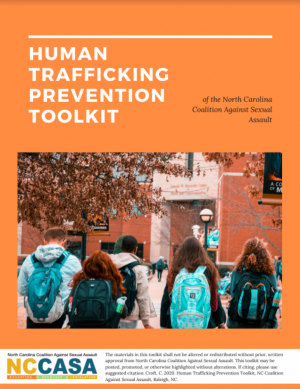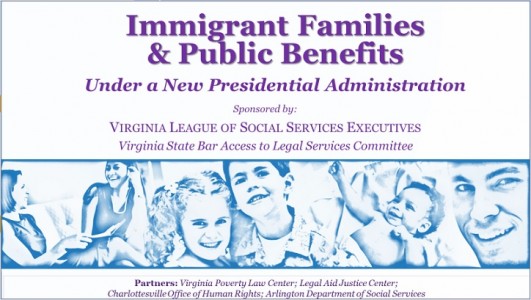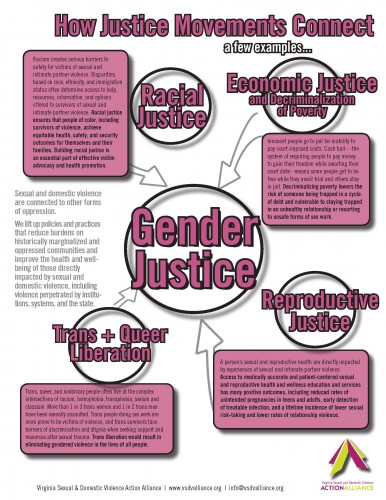Resources Library: Intervention & Services
Start a Search:
Human Trafficking Prevention Toolkit

Human trafficking prevention has at times been framed primarily as a criminal justice priority or been siloed from other forms of violence prevention. As experts in sexual violence prevention, NCCASA recognizes sex trafficking as a form of sexual violence and the connection of sexual violence to all forms of human trafficking. NCCASA is pleased to present the Human Trafficking Prevention Toolkit. In this toolkit, you'll find the Human Trafficking Prevention Overview, an overview of what human trafficking is and the public health approach to violence prevention, an exploration of the historical context that informs current frameworks and gaps, tips for effective upstream prevention, and strategies for incorporating a harm reduction lens into your human trafficking prevention work, as well as critical considerations in selecting a prevention strategy.
Immigrant Families & Public Benefits: Under a New Presidential Administration

Recent changes to immigration enforcement have resulted in social services agencies across Virginia reporting decreased numbers of immigrant families requesting access to services. Some immigrant families even seek to withdraw their U.S.-born children from crucial benefits for which they are eligible due to fear of immigration enforcement. This PDF document is from a webinar given on March 31, 2017, to discuss changes in the immigration enforcement landscape, its impact on immigrant communities, immigrants' eligibility for public benefits for themselves and their U.S.-born children and strategies to encourage immigrant families to continue to access public benefits for which they are eligible. The webinar was sponsored by the Virginia League of Social Services Executives, Legal Aid Justice Center, Virginia Poverty Law Center and the Virginia State Bar Access to Justice Committee.
Infographics: How Oppressive Systems Connect and How Justice Movements Connect

Gender-based violence (or the process of controlling, coercing, or otherwise exerting power over someone because of their gender) is both a tool and a driver of white supremacy. Ending gender-based violence requires us to see and dismantle the same forces that support the existence of white supremacy. At the same time, this work calls us to envision and work toward equity and liberation, while breaking out of silos.
The infographic, "How Oppressive Systems Connect" illustrates examples of how gender-based violence is driven by white supremacy, sexism, heterosexism, and capitalism. "How Justice Movements Connect" illustrates examples of how gender justice is supported by movements to build racial justice, economic justice, trans and queer liberation, and reproductive justice.
These resources are helpful for your prevention work, new staff orientation, volunteer training, board training, and other environments where you are exploring the many ways in which work to end sexual and intimate partner violence intersects with work to build racial justice, reproductive justice, economic justice, and trans and queer liberation.
Interactive Training Exercises on Abuse in Later Life
This manual provides instructions for 16 exercises focusisng on several key training points for multiple target audiences such as professionals from domestic or sexual violence agencies, elder abuse/adult protective services, aging, health care, justice, and others. It also provides ideas for exercises that trainers can adapt to meet the needs of many audiences.
Intersectionality of Forced Marriage with Other Forms of Abuse in the United States
In the United States, forced marriage can impact individuals of any age, gender, socio-economic status, ethnic or religious background. In a 2011 survey, service providers in the U.S. (primarily legal and social service agencies in the domestic violence and sexual assault field but also including law enforcement, school and university staff, counselors and other legal professionals) reported encountering as many as 3,000 known or suspected cases of forced marriage (Tahirih Justice Center, 2011). The current article is a follow up looking at the intersectionality of other forms of abuse and forced marriage.

